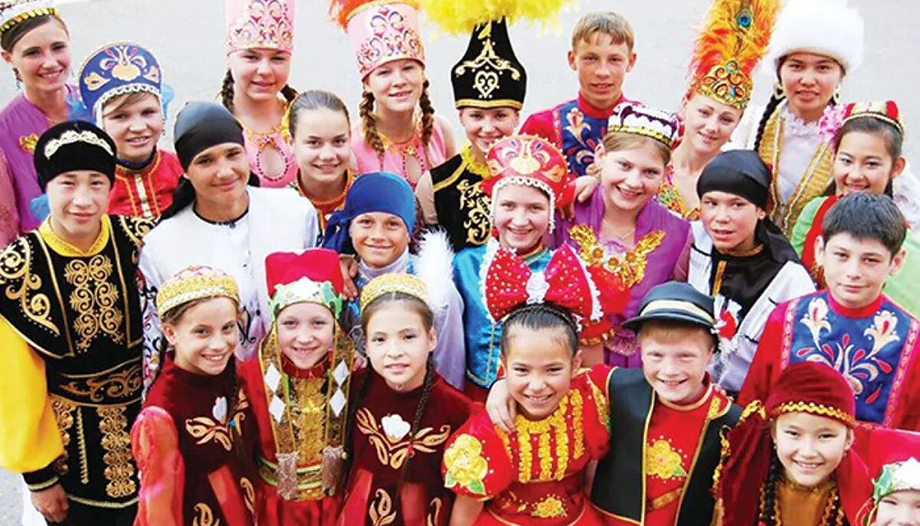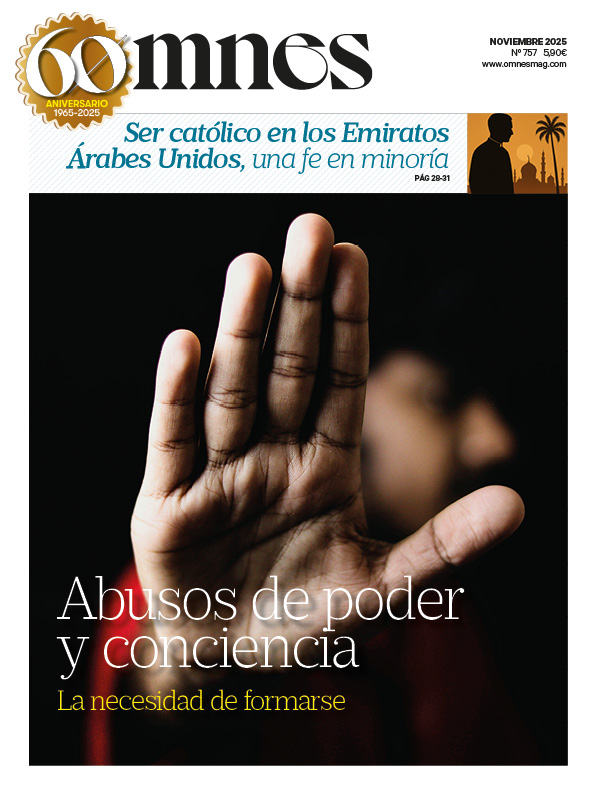Kazakhstan, in the heart of Central Asia, is a mosaic of peoples: of ethnicities, languages and religions. A cultural welter that has managed to preserve and promote harmony through a history forged on the banks of the Silk Road, nomadic tribes and the reception of deportees during the Soviet regime.
Kazakhstan, after its independence in 1991 when the Soviet Union collapsed, is today a sovereign country of immense steppes, multiple mineral resources, a small population (barely 19 million inhabitants) for the enormous extension that makes it the ninth largest country in the world (2,750,000 square kilometers: five times larger than Spain). It is also the country chosen by Pope Francis for his next trip, on the occasion of the VIIth Congress of Leaders of World and Traditional Religionsto be held in Nur-Sultan, the young capital of the country, on September 14 and 15, 2022.
The Pope's trip, the second that a Roman Pontiff has made to the country (John Paul II visited in 2001), will also be an opportunity to meet with the young Church that is growing in the country. A Church with a chequered and uneven history, but which goes back many centuries, to the point of being considered one of the traditional religions in the country.
The first probable presence dates back to the end of the ancient age (3rd century), as a result of the commercial and cultural movements brought about by the Silk Road. Several centuries later, Franciscan and Dominican missionaries, taking advantage of the heyday of the Silk Road, arrived in these lands in the 13th century: they cared for Christians who had kept the faith, spread the Gospel, and built monasteries. The fury of Genghis Khan, lord and master of the steppes in those years, nevertheless granted a certain religious tolerance to the peoples he conquered. These were years of conversions and of the first diplomatic relations between the Holy See, Genghis Khan and other rulers of the Central Asian states, even establishing a certain canonical structure: the first known bishop in the area dates back to 1278. However, in those years of intense Islamic growth, the hordes of Khan Ali overthrew the previous rulers, destroyed the monastery of Almalik in 1342, and martyred the Franciscan bishop Richard of Burgundy, along with five other Franciscans and a Latin merchant (all of whom are now in the process of beatification).
Modern martyrs
Once again, Tertullian's old adage that states. "the blood of the martyrs is the seed of Christians". is fulfilled again, although it has been necessary to wait several centuries: until the middle of the 20th century. Ironically, the providential instrument for that seed to bear fruit was Josef Stalin, and his deportation orders, which populated the deserted steppes with groups of Europeans, often Catholics: Poles, Germans, Ukrainians or Lithuanians... Some of those first deportees died trying to master the harsh climatic conditions of the area. But others survived and came to call these lands their homeland, thanks also to the hospitality and compassion of the primitive inhabitants of this area: the Kazakhs. During the Stalinist era, even at the risk of their safety, many of these Kazakhs fed or sheltered the deportees, sharing their fate.
With the dissolution of the USSR, modern Kazakhstan achieved independence in 1991 and established diplomatic relations with the Holy See in 1992. This marked the beginning of a time of freedom for the faithful of various confessions. Little by little, this Church, which emerged from a thousand difficulties and which brought together so many nationalities, was able to structure its work and the care of Catholics scattered throughout the vast expanse of the country. Today there are three dioceses: that of St. Mary in Astana, that of the Holy Trinity in Almaty, and the diocese of Karaganda. There is also an Apostolic Administration in the west of the country, in Atyrau. There are 108 churches throughout the country, serving a total of approximately 182,000 Catholics: about 1 % of the population. It is therefore the second largest Christian minority, after the Orthodox Church, in a country with a Muslim majority. Although Catholics often belong to families with European roots (Poles, Germans, Ukrainians or Lithuanians), the Church is gradually taking root in these lands with the conversion of people of various ethnicities (including Kazakhs). Every Easter, it is common to attend baptisms in the main cathedrals of the country.
Reasons for optimism
Although the numbers are small, the reasons for hope for this young Church are multiple: relations with the country's government are cordial and they seek collaboration in the field of peace building. The Catholic Church has been present in each of the editions of the Congress of Leaders of World and Traditional ReligionsThe first religious harmony and mutual respect between faiths was promoted by the country's first president, Nursultan Nazarvayev, in 2003. As has been emphasized since the beginning of modern Kazakhstan in 1991, one of the guarantees of peace in the country has been precisely religious harmony and mutual respect between faiths. Coexistence and common work with other confessions, in fields such as assistance to the family institution, ecumenical dialogue and education in values, is one of the guarantees to avoid a drift towards radical Islamism.
In the three dioceses and the apostolic administration, of gigantic extension, there is a calm but steady growth: new churches are opened and baptisms take place every year, thanks to the often self-sacrificing work of diocesan priests from various countries of Europe, Latin America and Asia. The religious orders present in the country guarantee a core of vocational diversity, which facilitates the growth of local vocations throughout the country. The twinning with the Greek Catholic community is also particularly close, as a clear sign of communion in such a mission and peripheral area.
In Karaganda, a city in the center of the country, is located the Central Asian Seminary, with aspirants to the priesthood coming from all over the area, such as Armenia, Georgia and other countries. In the same city, the Cathedral of Our Lady of Fatima, consecrated in 2012, commemorates the victims of what was one of the largest centers of persecution of the communist regime, the correctional complex "Karlag" (by its initials "KARagandinskiy LAGer-Karaganda camp") in which priests and lay Catholics suffered and died, as well as faithful of other religious confessions. The cathedral is thus considered a center of reconciliation and diffusion of spirituality and culture, also facilitated by concerts of the magnificent organ installed there (a particularly lucid way of spreading the beauty of the faith, considering the multi-religious environment of the country). Karaganda hosts, together with the Astana diocese, the majority of the Catholics in the country, due to the greatest concentration of deportees that took place in that northern area. In fact, in this second city lived and died key figures for the current flourishing of the Church, such as Blessed Bukovinskiy, Aleksey Zaritsky and others.
The faithful of the Church in Kazakhstan are eagerly awaiting the Pope's visit. As Francis himself remarked during his last visit ad limina of 2019, it is time to rejoice with the small herbs that grow in this land of steppes, harmony and peaceful coexistence. The Pope's visit to this missionary periphery will undoubtedly be very fruitful. The whole country joins in the welcome that the current president of the country Kasym-Jomart Tokaev, initiator of the official invitation to the Pope, is preparing with care and respect.








